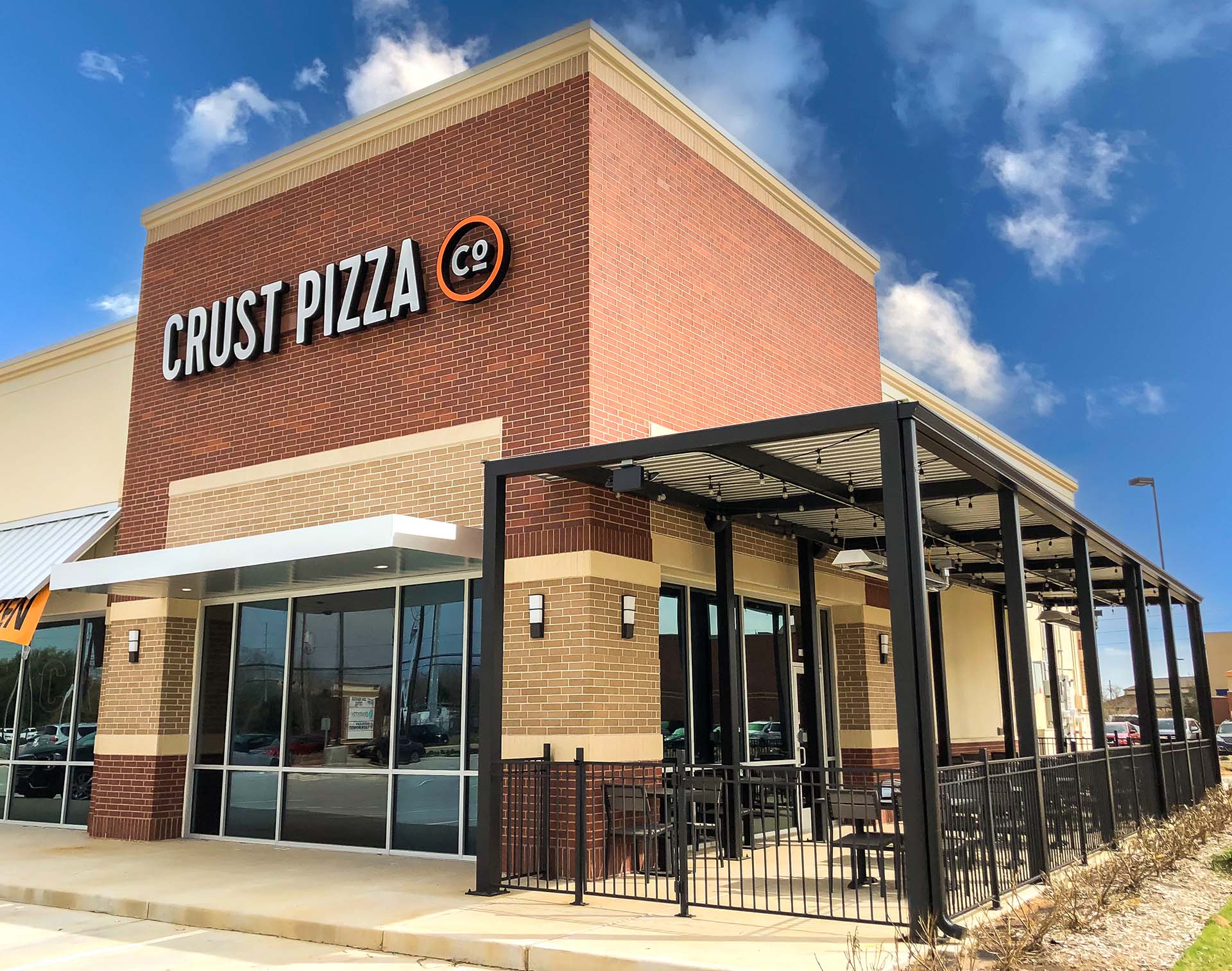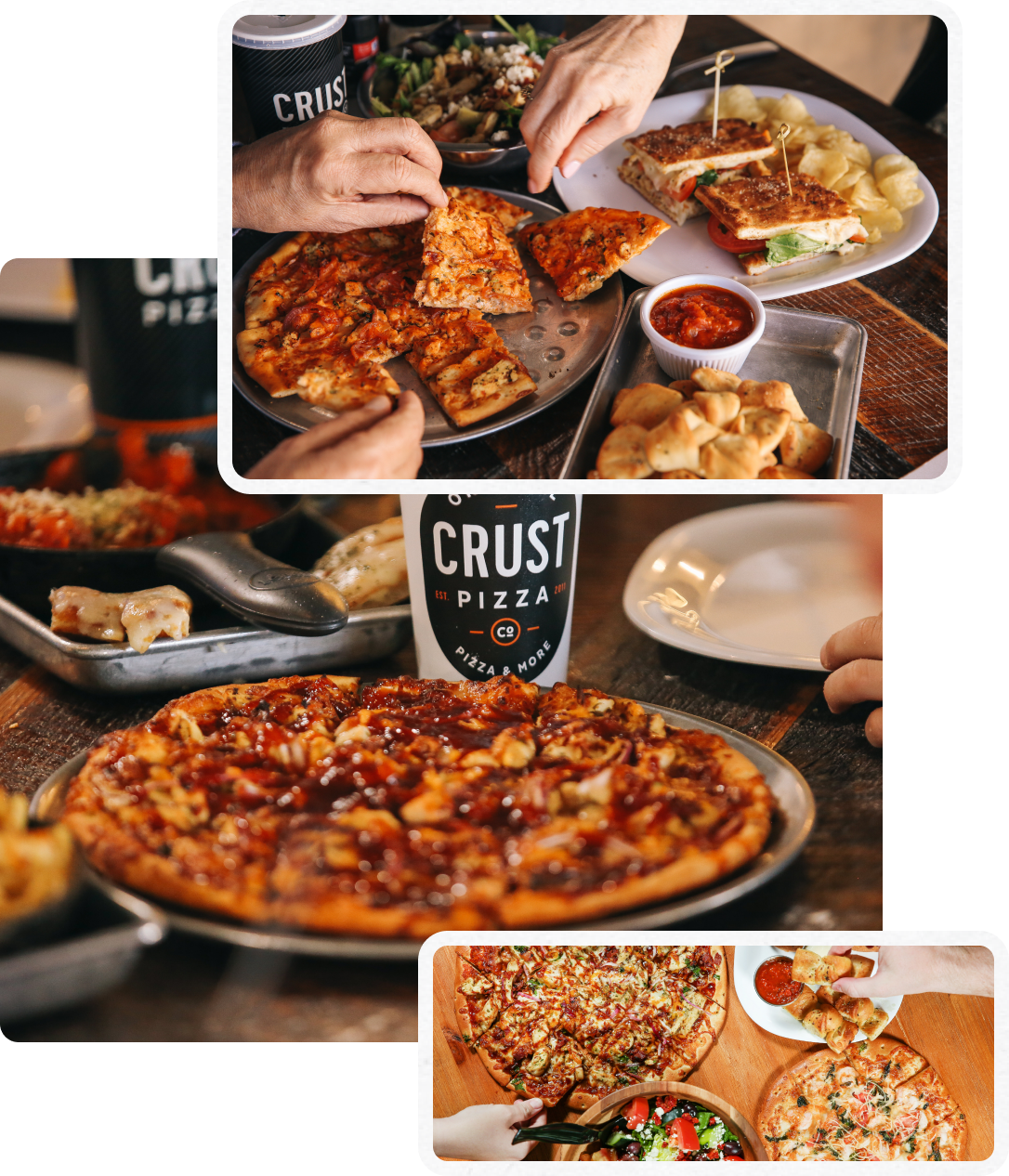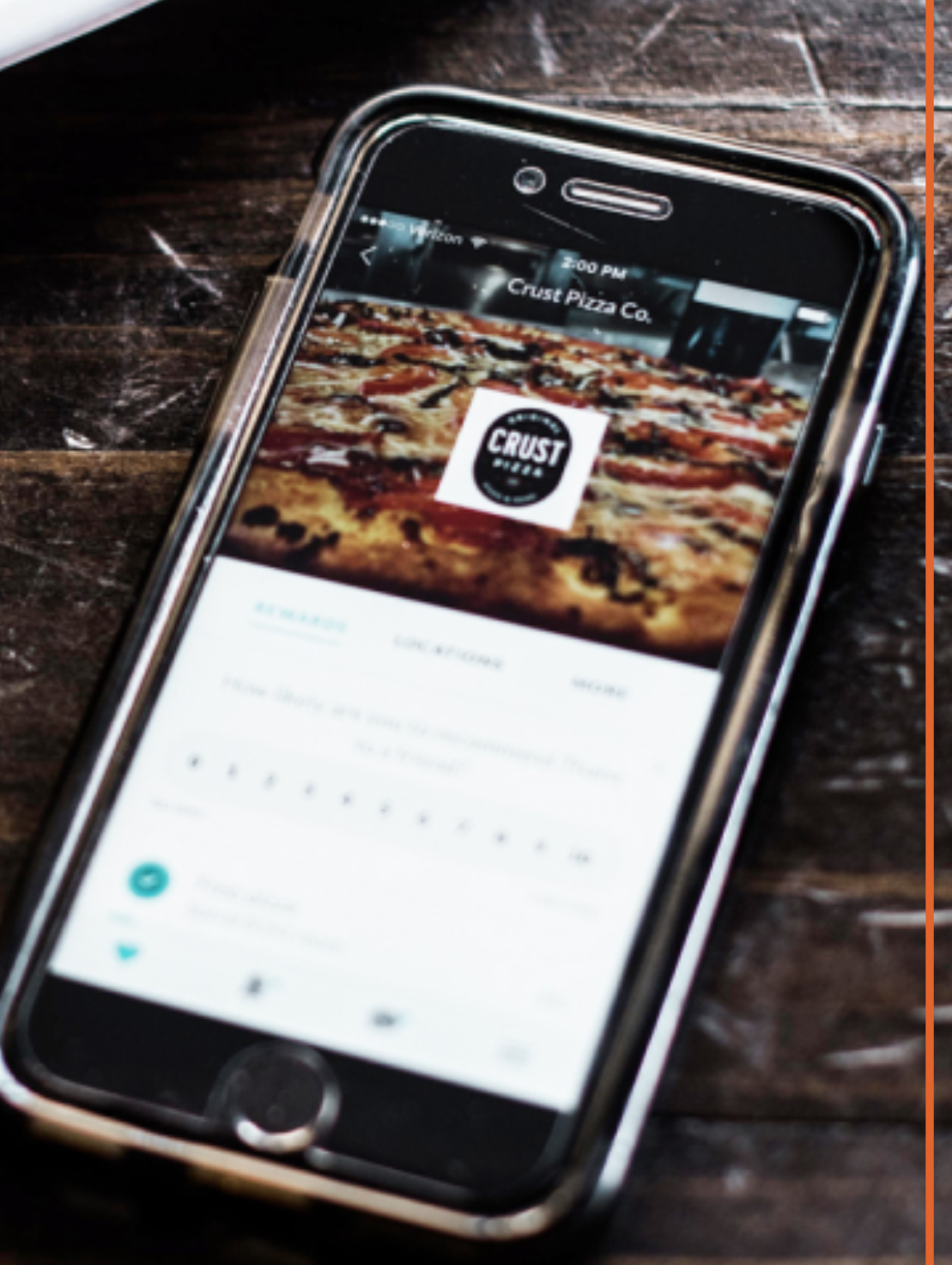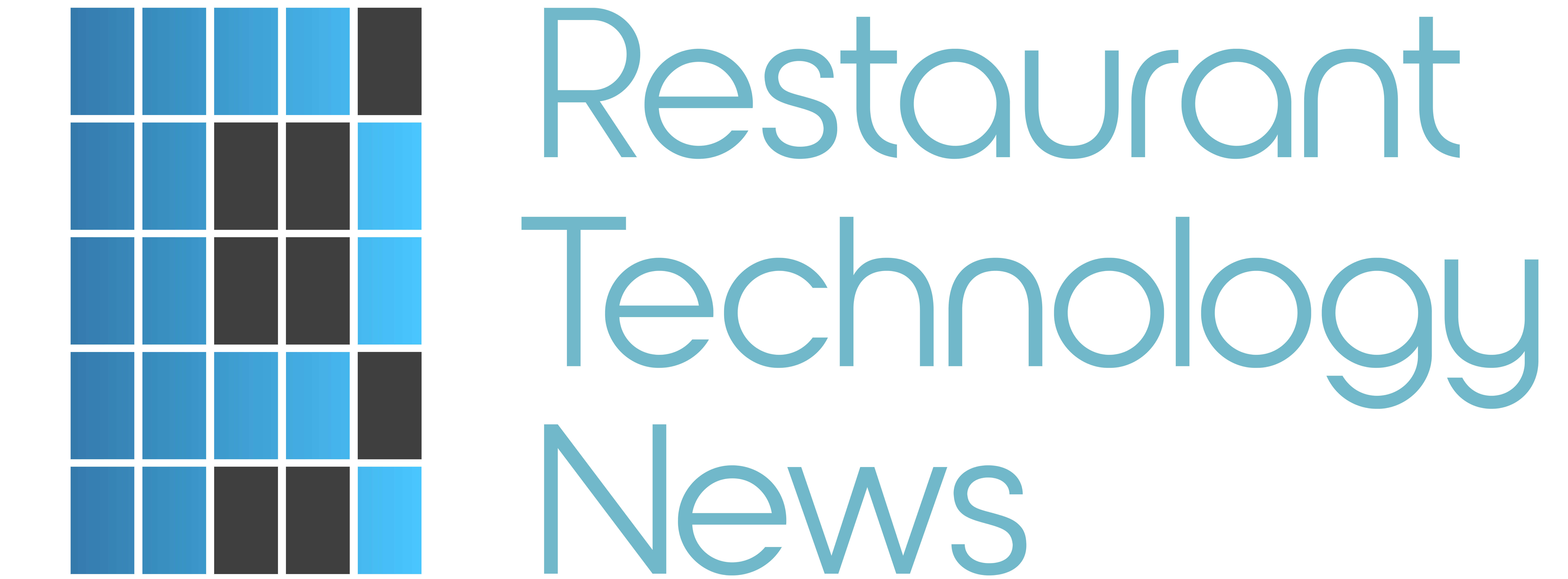
6.21.2025
Nick Fontenot isn’t your average CTO. At just 19, he was already charting his own course as a freelance web and graphic designer, driven more by grit than credentials. Two decades and several multi-million-dollar ventures later, he’s applying that same builder’s mindset to reshape the future of restaurant technology at Crust Pizza Co., a fast-growing fast-casual pizza franchise.
As CTO, Fontenot isn’t just focused on what works today—he’s architecting systems designed for where the business is headed tomorrow. His mission? To give Crust Pizza franchisees a competitive edge by bringing everything—from point-of-sale and loyalty to scheduling, training, and forecasting—under one cohesive, fully owned tech ecosystem. That kind of control, he argues, isn’t just nice to have. It’s essential to scale with speed, agility, and operational consistency.
In a year when Crust Pizza landed on Entrepreneur’s Franchise 500 list and expanded into major Texas markets, Fontenot has been quietly leading a digital transformation from behind the scenes. Now, with a proprietary technology platform, Fontenot is proving that the future of restaurant growth lies not in plugging in third-party tools—but in building smarter, integrated systems from scratch. In this Spotlight Interview, Fontenot explains why Crust Pizza ditched its reliance on third-party systems like Toast, what it takes to build an in-house restaurant operating system, and how data, AI, and human-centered design are shaping the next chapter of tech-enabled hospitality.
What inspired the decision to ditch third-party systems and take full ownership of Crust Pizza’s entire technology stack?
The decision was driven by a need for control, flexibility, and long-term scalability. Third-party systems like Toast served us in the early days, but we kept running into roadblocks – limited customization, slow support, and features that didn’t align with how Crust actually operates.
By building our own platform, we’re setting ourselves up to move faster, solve problems specific to our model, and create a guest and employee experience that’s truly unique to Crust. This isn’t about reinventing the wheel – it’s about building a better one that’s made for how we do business.
 From a CTO’s perspective, what are the biggest advantages of owning your own POS, loyalty, and operations platforms in today’s restaurant environment?
From a CTO’s perspective, what are the biggest advantages of owning your own POS, loyalty, and operations platforms in today’s restaurant environment?
The biggest advantage is adaptability. Once our full platform is live, we’ll be able to make changes quickly, iterate based on store-level feedback, and actually design features around our workflows – not generic restaurant templates.
It also means complete integration. We’re not bouncing between disconnected systems for POS, loyalty, scheduling, and reporting. It’s all one ecosystem. And when you own the data, you’re in a much stronger position to make fast, smart decisions across the brand.
What were some of the early trade-offs or challenges you encountered when shifting from vendor solutions to fully custom-built tech?
We knew going in that it would be a heavy lift. The biggest early challenge has been time – building a custom POS from scratch takes patience, planning, and testing. We’ve had to slow down to get the foundation right, and that meant putting off certain features until we knew they’d be solid at scale.
There’s also the shift in mindset – moving from a vendor support model to being fully responsible for the system ourselves. It’s more work upfront, but we believe the long-term payoff in control and innovation is absolutely worth it.
 How has owning the tech stack changed your relationship with franchisees and operators at the store level?
How has owning the tech stack changed your relationship with franchisees and operators at the store level?
Once this rolls out, it’s going to reshape that relationship in a major way. Instead of relying on a third party to fix problems or implement updates, franchisees and operators will have a direct line to our team. If something’s not working or could be better, we can respond fast – because we built it.
More importantly, it shows that we’re investing in their success. We’re not just handing them software; we’re giving them a tool that was built with their daily workflow in mind. That builds trust and alignment across the system.
How do you prioritize which features or modules to build next when you’re essentially developing a full-stack restaurant OS in-house?
Our approach is to prioritize what’s going to make the biggest difference at the store level. We’re constantly gathering feedback from GMs and operators to figure out what slows them down or causes errors, and we build with those real-world pain points in mind.
We balance quick wins – like small UX tweaks or reporting improvements – with strategic features that set us up for long-term growth, like advanced labor tools or deep loyalty integration. The goal is always the same: solve real problems and avoid building just for the sake of building.
With so many moving parts-from POS to loyalty to employee tools-how do you ensure the tech doesn’t overwhelm store teams?
That’s been a priority from day one. As we roll this out, everything is designed to feel simple, clean, and familiar. We’ve stripped out the clutter and focused on intuitive design so team members can walk in and know what to do, even on their first day.
We’re also phasing in features gradually – not dumping a huge platform on stores all at once. That helps with adoption and gives us time to train properly. The whole idea is to make the tech disappear into the background and just help the team do their job faster and easier.
Can you walk us through the design of your new employee app? What problems does it solve, and what kind of feedback have you received from the field?
The employee app was built to solve a bunch of day-to-day headaches our teams were dealing with – everything from checking schedules to communicating with management to accessing training content. Before, those things were scattered across texts, group chats, spreadsheets, and third-party apps. It was messy, inconsistent, and honestly not scalable.
We designed the app to be simple, clean, and mobile-first – because that’s how our team lives. At the core, it lets employees clock in and out, view schedules, swap shifts, and track their hours – but it also serves as a hub for communication. Managers can push updates, recognize top performers, or roll out new procedures without relying on paper or hoping someone reads a message thread.
We also built in onboarding tools, so new hires can complete training, watch how-to videos, and get familiar with our standards all in one place. That’s been huge for consistency across stores.
As for feedback – it’s been overwhelmingly positive. The crew appreciates how easy it is to use, and managers love not having to chase people down for updates. It’s eliminated a lot of back-and-forth and given us a consistent, professional communication channel that actually matches the scale of where we’re headed.
How are you using data to streamline day-to-day operations across locations-and what has surprised you most in the process?
Once our system is fully live, we’ll be collecting clean, real-time data from every store – from ticket times and labor efficiency to modifier trends and guest behavior. That gives us the ability to act quickly, spot friction points, and fine-tune operations on the fly.
One surprising thing we’ve already seen in early tests is how much small changes matter – things like how a button is laid out or how long it takes to ring in a certain order. Those tiny improvements can add up to huge time savings when multiplied across 30+ stores.
You’ve talked about using tech to drive smarter site selection. What kind of data are you leveraging to make those decisions?
We use AI-driven modeling and cell phone location data to identify where our potential guests actually are throughout the day – not just where they live. That gives us visibility into traffic patterns, time-of-day density, and the performance of nearby competitors.
We combine that with over 100 different data points – demographics, drive times, brand engagement, co-tenancy, local growth trends – and use it to generate a site score from 0 to 100%. That system is helping us make smarter, more confident growth decisions and avoid the “looks good on paper” traps.
How does Crust’s approach to data-driven growth differ now versus when you were relying on third-party platforms?
With third-party systems, we were limited – fragmented data, delayed reporting, and not much control. Now, we’re building a system that gives us real-time access to everything – and more importantly, lets us act on it.
We’re moving from a reactive model to a proactive one. Instead of waiting for issues to surface, we can spot them early and make adjustments in hours, not weeks. It’s not just about seeing more data – it’s about using it to lead the business day-to-day.
 What role does predictive analytics or AI currently play-or will play-in your platform and your overall strategy for scaling the brand?
What role does predictive analytics or AI currently play-or will play-in your platform and your overall strategy for scaling the brand?
Predictive tools are a huge part of our long-term strategy. As we roll out, we want to incorporate them for things like labor forecasting, inventory usage, and smarter scheduling – using historical trends, weather, and even local events to make better decisions.
Down the line, we can also see us leveraging AI for things like dynamic pricing, operational alerts, and even menu optimization based on behavior patterns. The goal is to scale smart – with systems that help every store run as efficiently as possible, even as we grow.
What does personalization look like in Crust’s loyalty platform, and how are you using it to foster repeat visits and brand love?
We’re working on gamifying our rewards platform to make the experience more engaging and habit-forming. The idea is to move beyond basic “spend X, get Y” programs and create something that feels like a journey. As guests visit more often, they level up – unlocking better perks, exclusive items, surprise bonuses, and even early access to new menu drops.
It’s about tapping into that sense of progression. People love to feel like they’re working toward something, and we want our loyalty program to reflect that. Whether it’s hitting a new tier, earning a special badge, or being recognized as a VIP guest, we’re building mechanics that reward not just spending, but consistent engagement with the brand.
Ultimately, it’s about giving guests a reason to keep coming back – not just for the food, but for the experience. And the more we personalize those milestones, the stronger the emotional connection becomes.
How do you think about the future of guest engagement-especially as more restaurants turn to apps and loyalty programs to capture first-party data?
Guest engagement is evolving fast, and honestly, just having an app or a loyalty program isn’t enough anymore. Everyone has those now – what matters is how you use them. For us, the future is about creating a two-way relationship, not just pushing offers.
First-party data is the foundation, but it’s what you do with it that builds loyalty. We’re focused on making every digital touchpoint – whether it’s an order, a reward, a notification – feel personal and relevant. That means real-time engagement, tailored messaging, and even adapting the in-store experience based on guest preferences.
We’re also thinking beyond transactions. Can we make the app fun? Can we use it to tell our story, spotlight team members, or celebrate milestones with our guests? That’s where the emotional connection happens.
The goal isn’t just more visits – it’s building a community around the brand. When a guest feels known, valued, and part of something, that’s what keeps them coming back. Tech is just the tool – it’s the human side of the data that creates loyalty that lasts.
With your new tech stack rolling out this summer in Texas stores, what are the KPIs or signals you’ll be watching most closely?
We’ll be laser-focused on a few core KPIs that tell us if it’s truly making life better at the store level and driving the business forward.
First is order throughput and ticket times – we want to see faster, smoother shifts, especially during peak hours. If we’re shaving minutes off Friday night rushes, that’s a win.
Next is order accuracy and comp/void rates. Fewer mistakes means the system is working how it should and our teams trust it.
We’ll also be watching labor efficiency, especially how well the new tools support scheduling and time management. And on the guest side, we’re tracking loyalty engagement, app usage, and repeat visit frequency to make sure the customer-facing parts of the tech are actually driving behavior.
Lastly, we’re paying close attention to operator feedback and support requests. If we’re getting fewer “how do I do this?” questions and more “this made my shift easier” comments, we’ll know we’re headed in the right direction.
At the end of the day, success looks like happier teams, faster service, and more loyal guests. That’s the bar.
What advice would you offer other restaurant brands thinking about building their own in-house tech stack from scratch?
First, be real about why you’re doing it. Building your own tech stack isn’t about chasing buzzwords – it’s a serious commitment of time, money, and brainpower. But if you’ve outgrown off-the-shelf systems, and you know exactly what problems you’re trying to solve, it can be a total game-changer.
Second, start small and solve real problems first. Don’t try to rebuild the whole thing in one shot. Focus on one pain point – whether it’s POS, scheduling, or reporting – and build from there. That momentum matters.
Also, get your operators involved early. They’ll tell you what actually works in the real world, and they’ll help you build trust across the system. If you design for them, not just for the tech team, you’ll win.
And finally, you have to know that it’s a grind. There will be bugs. Late nights. Tough calls. But if you stick with it, stay close to the stores, and keep listening to your team, the payoff is huge – because now you control the tools, the roadmap, and the experience.

